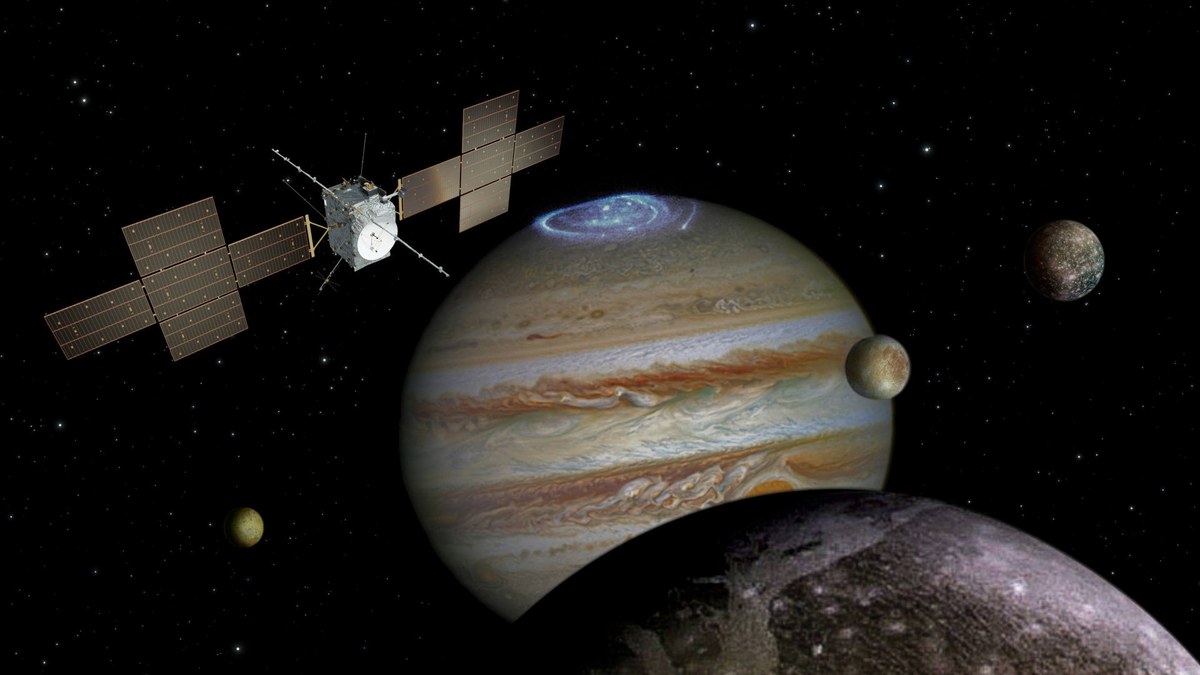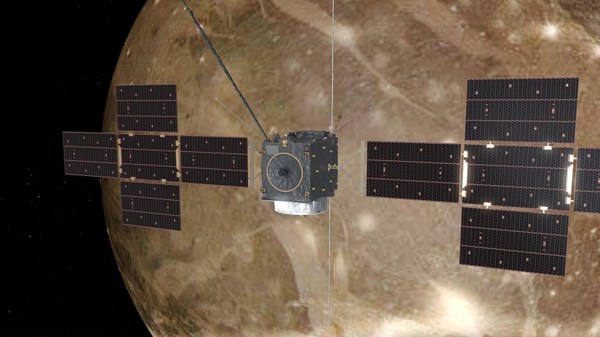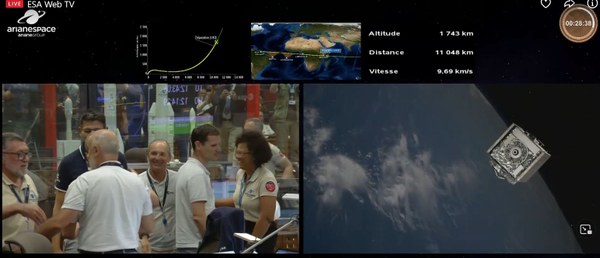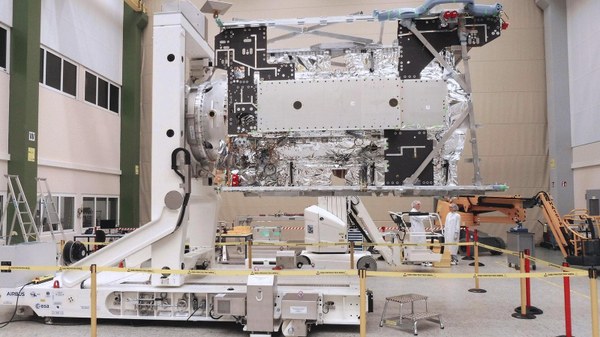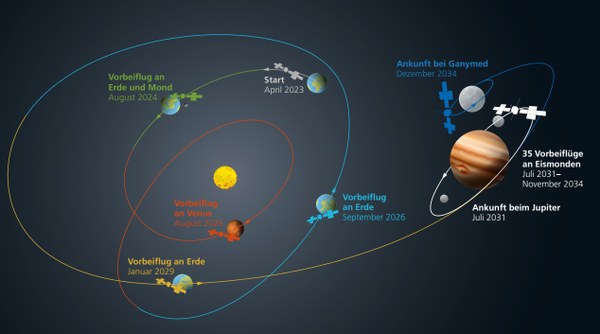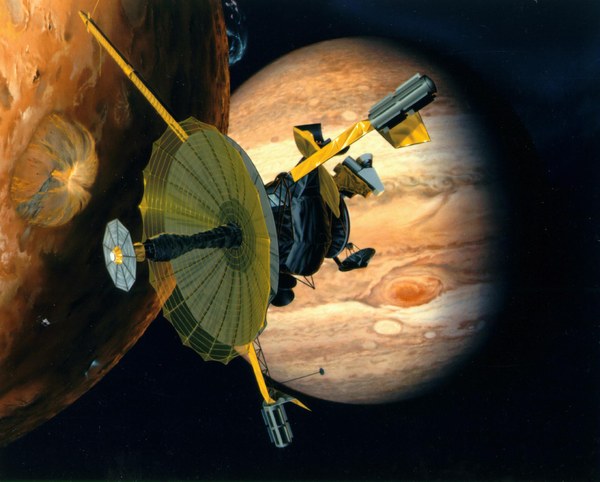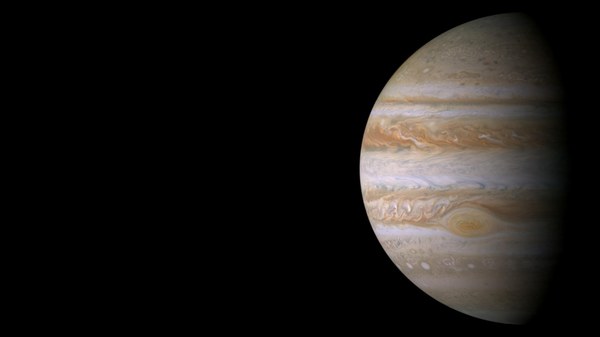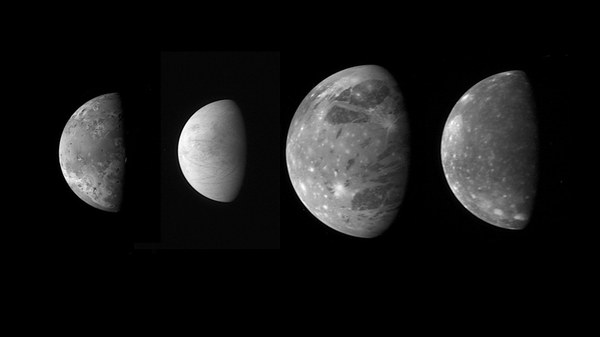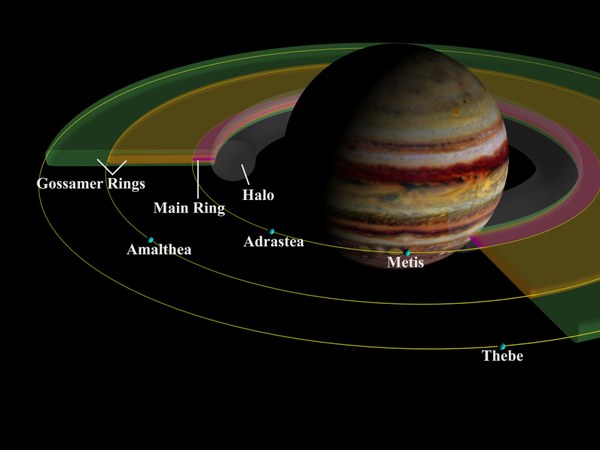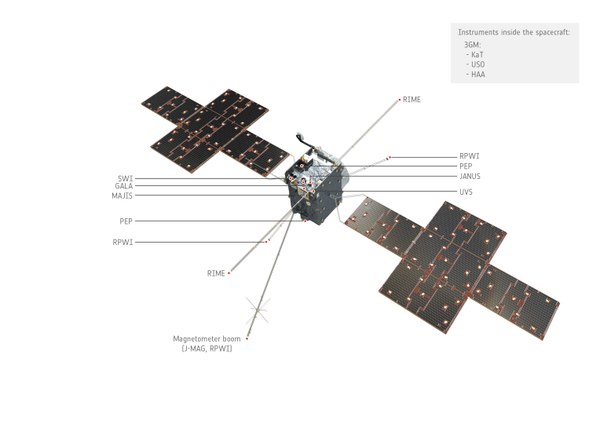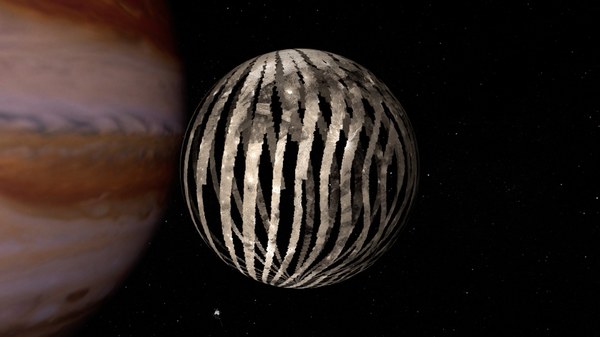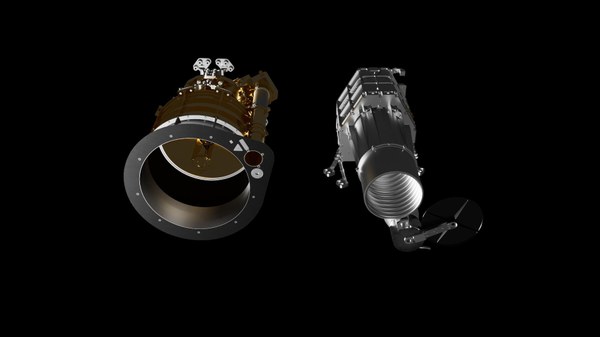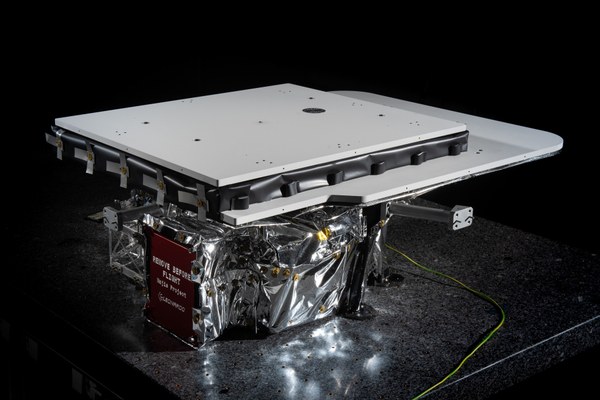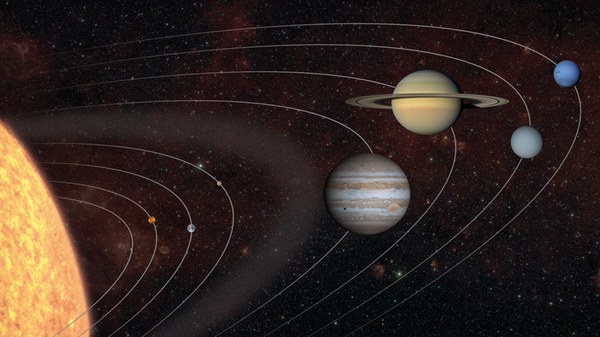JUICE
The JUpiter ICy moons Explorer (JUICE) was selected in 2012 as the first L-class (large) mission in the European Space Agency's (ESA) Cosmic Vision Programme 2015-2025. JUICE will be the first spacecraft to enter orbit around a moon of another planet, in this case, Jupiter's moon Ganymede. After launch in April 2023, JUICE will begin an eight-year journey to Jupiter. JUICE will first fly past Earth three times and our inner neighbour Venus once to gain the necessary energy to cross the asteroid belt between Mars and Jupiter and set course for the giant planet.
JUICE will arrive in the Jupiter system in 2031. After a multi-year tour of the Jupiter system that will see flybys of the moons Ganymede, Europa and Callisto, JUICE will manoeuvre into orbit around Ganymede in 2034 and begin to study the moon in greater detail. The final phase of the nominal mission is a polar orbit around Ganymede at an altitude of approximately 500 kilometres. In the event of a mission extension, ESA plans to reduce the orbital altitude above the surface of Ganymede to 200 kilometres. At the end of the mission, JUICE will no longer be able to leave the moon's gravitational field and will impact the icy surface of Ganymede due to orbital disturbances caused by Jupiter’s gravity.
Oceans of water beneath the surface of Jupiter's large moons?
JUICE will enable a detailed exploration of the Jovian system, especially its icy moons Europa, Ganymede and Callisto. Previous data and model calculations indicate that water oceans up to several hundred kilometres thick can be found beneath the cold icy surfaces of Europa, Ganymede, and Callisto. These large water reservoirs would represent a volume of water greater than the combined volume of Earth's oceans. An important goal of the JUICE mission is to detect these oceans, determine their fundamental properties, such as density and salinity, and investigate the dynamic processes in the oceans and the overlying ice layers. The latter processes have left their mark on the icy moons, especially Europa and Ganymede, making them unique planetary objects in the Solar System.
JUICE will characterise the possible habitability of the moons and help researchers determine if the planetary bodies may have suitable conditions for the development of life. This is because the existence of water combined with moderate temperatures and possible admixtures of salts and minerals under the cold ice crusts makes it conceivable that life could evolve in these subcrustal water worlds. The mission will also investigate the complex processes in Jupiter's environment and study Jupiter as an archetype for a 'gas giant'. Jupiter is the largest planet in the Solar System, with a diameter of approximately 140,000 kilometres. By comparison, Earth’s diameter is just under 13,000 kilometres.
Ganymede – the only moon in the Solar System with its own magnetic field
The JUICE mission focuses particularly on Ganymede, the largest moon in the Solar System. With a diameter of over 5000 kilometres, it is even larger than Mercury. Ganymede has a unique geological past, characterised by active phases with diverse tectonics and cryovolcanism that causes eruptions of water and ice. Ganymede is also the only moon that has a self-generated magnetic dipole field. Similar to Earth, this dipole field is probably generated by convection currents in its liquid outer iron core. In addition to its own dipole field, Ganymede generates an induced magnetic field in response to Jupiter's rotating, time-varying magnetosphere. These induced magnetic fields, which have also been observed at Europa and Callisto, are strong evidence of liquid oceans beneath the moons' icy layers.
In addition to Ganymede, which will be explored in detail from orbit in 2033 and 2034, numerous flybys of the moons Europa (two flybys) and Callisto (21 flybys) will help further advance our understanding of Jupiter's icy moons. In the case of Europa – which is about the size of Earth's moon – researchers will study regions of active cryovolcanism on the surface in addition to answering the question on the presence of liquid water.
Callisto's surface is a relic from an early phase of the Solar System and is mainly characterised by impact craters. We know comparatively little about Callisto's inner structure, evolution and degree of differentiation into individual layers. JUICE's measurements will allow us to better understand the evolution of these very different worlds, each of which is unique, and assess whether habitable conditions could exist inside the moons over long enough periods of time to allow life to evolve. However, JUICE itself will not be enough to prove whether life exists here. This will be the task for future lander missions, if applicable.
DLR's contributions to the JUICE mission
Ten different instruments have been developed for the investigation of Jupiter and its icy moons. For some of these instruments, JUICE marks the first time that they will be used on a space mission and they will provide completely new types of dataset. In addition to the icy moons, JUICE will also be used to study Jupiter itself, its thin ring system, its magnetosphere and the diverse interactions between the magnetosphere, the moons and the giant planet. Jupiter's ring system, its smaller moons and Io, the innermost of the four 'Galilean moons', will also be observed using remote sensing instruments such as cameras and spectrometers.
Through its Institute of Planetary Research, the German Aerospace Center (Deutsches Zentrum für Luft- und Raumfahrt; DLR) is contributing to the JUICE spacecraft’s GALA (Ganymede Laser Altimeter) instrument and JANUS camera, as well as through membership on various scientific teams, some of which are funded by the German Space Agency at DLR.
GALA's main task is to measure the topography of Ganymede and to detect the ocean within by measuring Jupiter's tidal effect on the surface of the ice. JANUS will map the entire surface of Ganymede and, with data collected during flybys, map the surfaces of Europa and Callisto and map specific regions in high resolution. JANUS will also be used to characterise Jupiter's atmosphere, the surface of the most volcanically active body in the Solar System, Io, Jupiter's numerous small moons and its ring system.
News
Multimedia
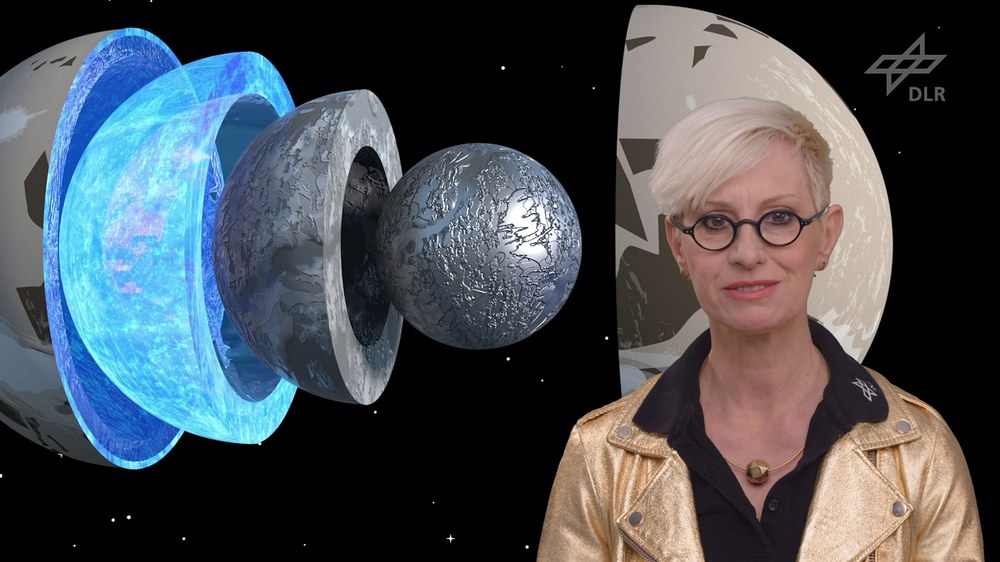
Your consent to the storage of data ('cookies') is required for the playback of this video on Youtube.com. You can view and change your current data storage settings at any time under privacy.

ESA/ATG medialab (orbiter); NASA/JPL/DLR (Jupiter, moons)
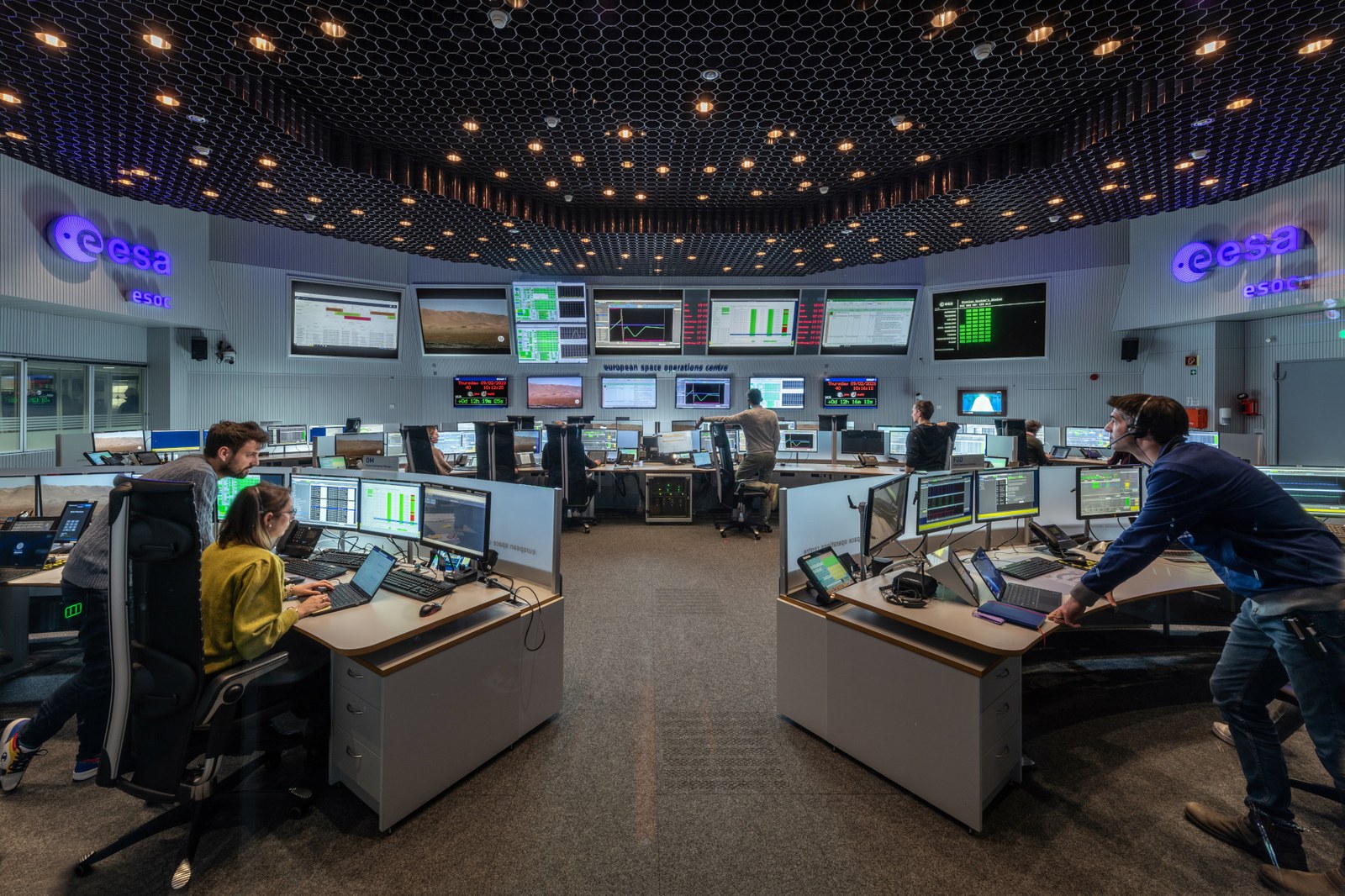
ESA

